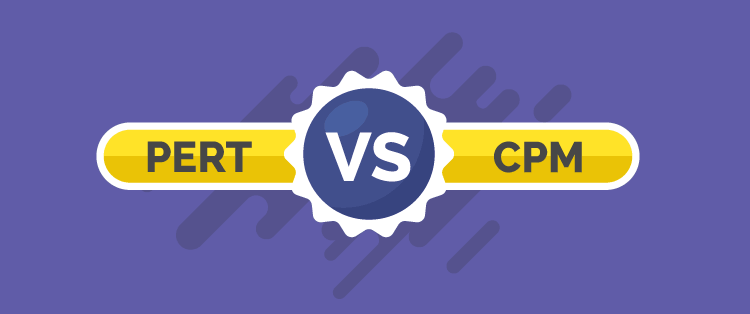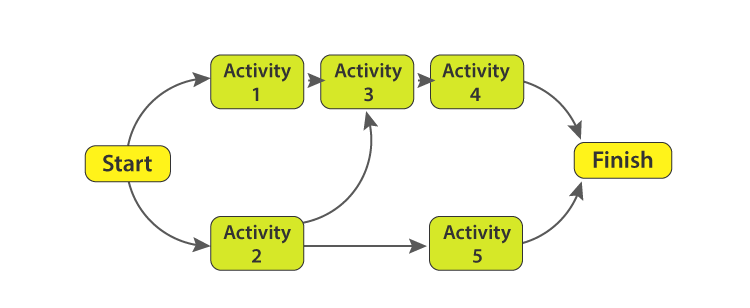
Project management can be defined as a structural way of planning, scheduling, executing, monitoring and controlling various phases of a project. To achieve the end goal of a project on time, PERT and CPM are two project management techniques that every management should implement. These techniques help in displaying the progress and series of actions and events of a project.
Meaning of PERT
Program (Project) Evaluation and Review Technique (PERT) is an activity to understand the planning, arranging, scheduling, coordinating and governing of a project. This program helps to understand the technique of a study taken to complete a project, identify the least and minimum time taken to complete the whole project. PERT was developed in the 1950s, with the aim of the cost and time of a project.
Meaning of CPM
Critical Path Method or CPM is a well-known project modelling technique in project management. It is a resource utilising algorithm that was developed in the 1950s by James Kelly and Morgan Walker.
CPM is mainly used in projects to determine critical as well as non-critical tasks that will help in preventing conflicts and reduce bottlenecks.
In essence, CPM is about choosing the path in a project that will help in calculating the least amount of time that is required to complete a task with the least amount of wastage.
The Critical Path Method or CPM has been used in many industries starting from defence, construction, software, aerospace, etc.
PERT vs CPM
|
Abbreviation |
|
| PERT – Project Evaluation and Review Technique | CPM – Critical Path Method |
|
What does It Mean? |
|
| PERT – PERT is a popular project management technique that is applicable when the time required to finish a project is not certain | CPM – CPM is a statistical algorithm which has a certain start and end time for a project |
|
Model Type |
|
| PERT – PERT is a probabilistic model | CPM – CPM is a deterministic model |
|
Focus |
|
| PERT – The main focus of PERT is to minimise the time required for completion of the project | CPM – The main focus of CPM is on a trade-off between cost and time, with a major emphasis on cost-cutting. |
|
Orientation type |
|
| PERT – PERT is an event-oriented technique | CPM – CPM is an activity-oriented technique |
PERT Example Advantages of CPM
Advantages of CPM
- Provides an outline for long term coordination and planning of a project
- Recognizes critical activities
- Easy to plan, schedule and control project
- It improves productivity
- Manages the resource needed
Disadvantages of CPM
- For beginners its difficult to understand
- Software too expensive
- Sometimes, to structure CPM is too time-consuming
- It cannot control and form the schedule of a person involved in the project
- Allocation of resources cannot be monitored properly
CPM Example How to Make a PERT Chart?
How to Make a PERT Chart?
To prepare a PERT Chart, the following steps need to be followed.
- Recognize particular projects and milestones.
- Decide the precise sequence of the project.
- Create a network diagram.
- Determine the time needed for each project activity.
- Manage the critical path.
- Update the PERT chart as the project progresses.
CPM in Project Management
The Critical Path Method in project management is a step-by-step technique used in the planning process that explains the critical and non-critical activities of a project. CPM goals are to check time-bound issues and process that causes blockage in the project. The CPM is preferably applicable to projects that involve various activities that are associated with a complex method. Once CPM is applied, it will help you keep your projects on track.
- Helps you recognize the action that needs to be performed on time so that the whole project is completed on time.
- Indicates which responsibilities can be delayed and for how long without affecting the overall project plan.
- Determines the least amount of time it will take to accomplish the project.
- Tells you the newest and latest time each activity can start on in order to manage the schedule.
The term of each action is listed above each joint in the diagram. For an individual path, insert the duration of each node to ascertain the total duration. The critical path is the one that has the longest duration.
The above mentioned concept ‘PERT vs CPM’ is elucidated in detail for Commerce students. To know more, stay tuned to BYJU’S.
Top Differences in Commerce:
- Difference Between Venture Capital and Private Equity
- Difference Between Primary Data and Secondary Data
- Difference Between Bill of Exchange and Promissory Note
- Difference Between Centralization and Decentralization
- Difference Between Reserve and Provision
- Difference Between Partnership Firm and Company
Comments